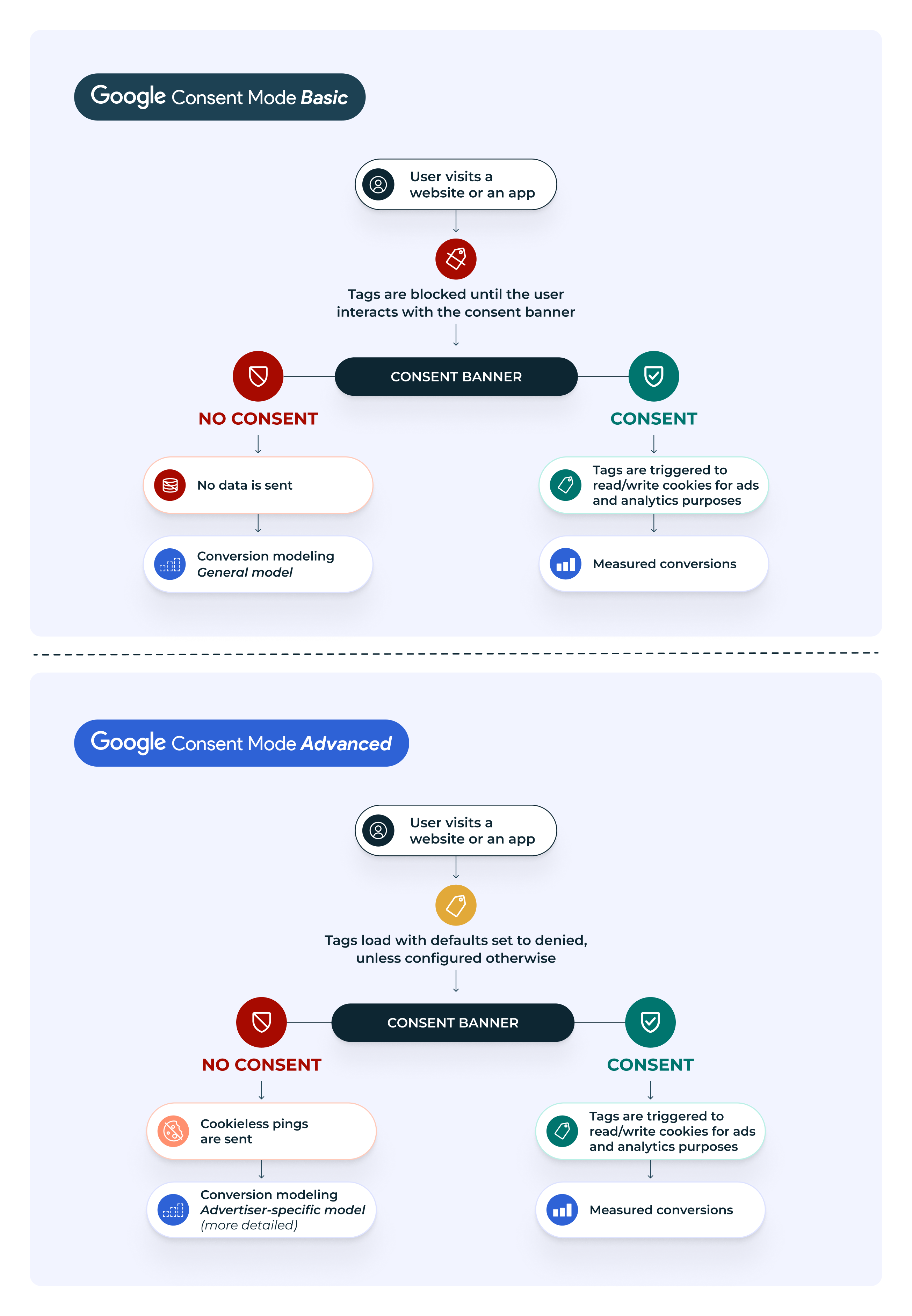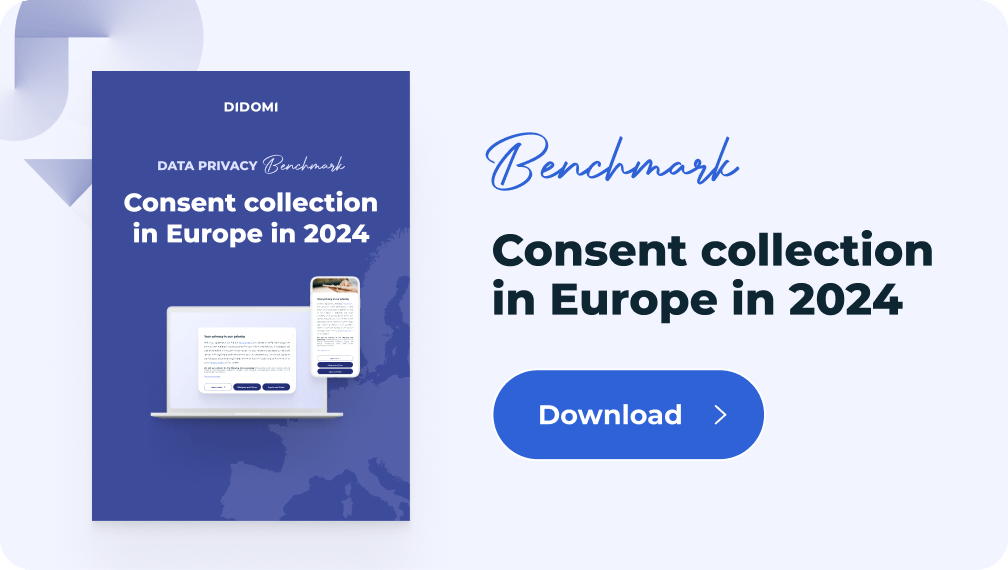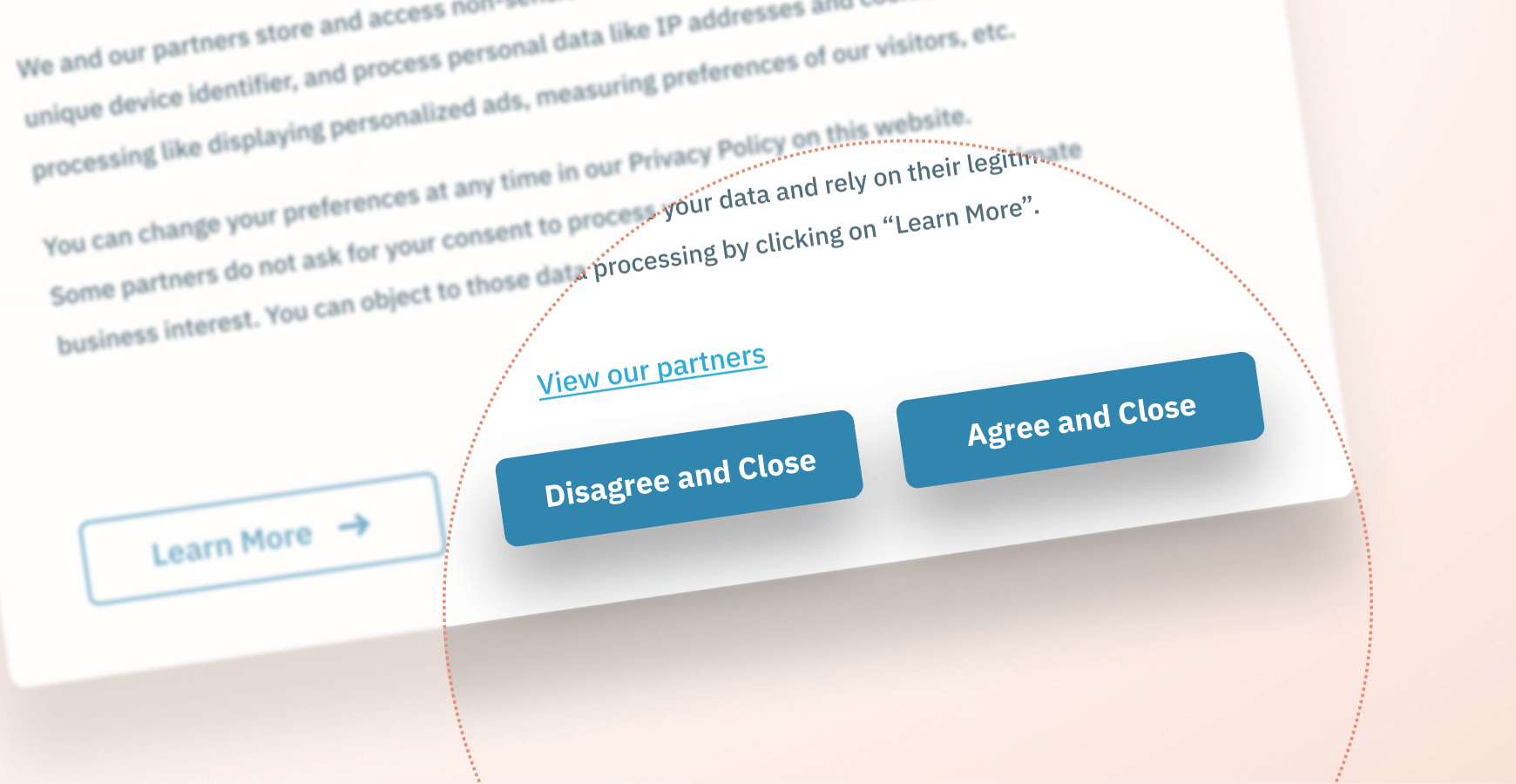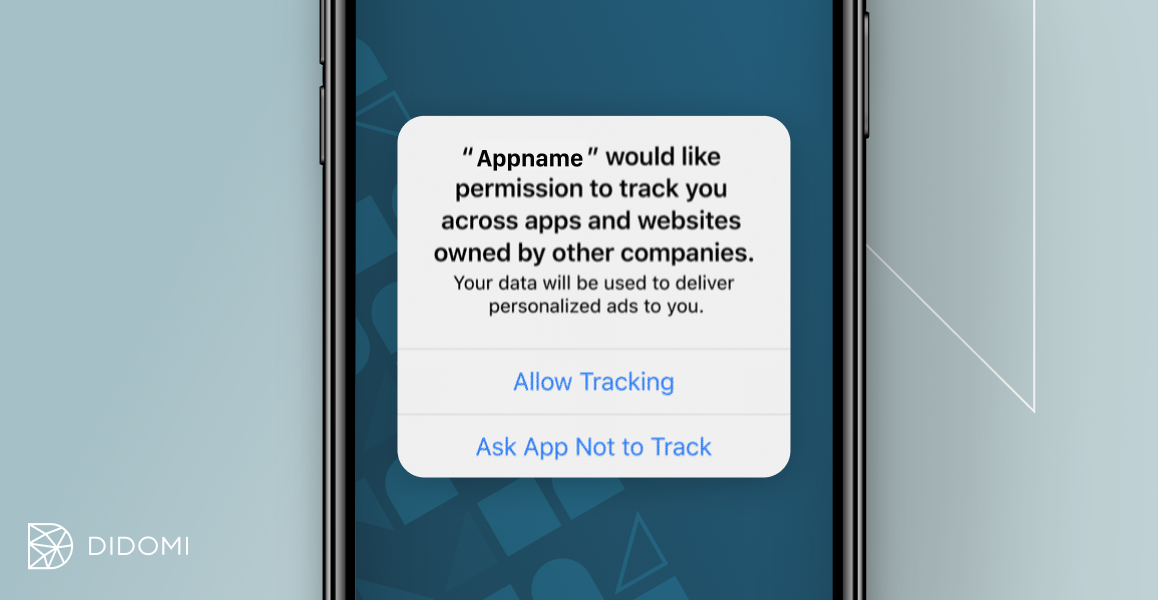Google is taking the necessary measures to comply with the requirements of regulations like the GDPR or the ePrivacy Directive, starting with introducing changes to consent mode, its mechanism helping organizations gather user data while respecting their choices.
Google will start enforcing its EU User Consent Policy (UCP) for audience and measurement solutions in March 2024. To make sure to maintain performance, advertisers are required to upgrade to Google Consent Mode v2 before March.
This article covers consent mode, how it works, the latest v2 updates, and how to start your implementation.
|
Further reading: Last February, we hosted webinars in English, French, and Spanish with Google and other partners on the topic of Google Consent Mode V2.
Visit this dedicated page to access the presentation from the webinar in English:
|
Summary
What is Google consent mode, and how does it work?
At a high level, consent mode is a tool that allows organizations to detect consent signals from users and adjust Google tags accordingly.
In practical terms, Google products will respect user consent, and Google will help you make up for lost data by filling the gaps using conversion modeling. A typical consent mode scenario will look something like this:

At Didomi, we’ve long collaborated with Google and integrated consent mode in our solutions.
Through our native integration, Didomi customers have ensured data collected using our Consent Management Platform (CMP) is safely forwarded to Google, their users’ choices are respected, and they can leverage Google conversion modeling to overcome data loss due to opt-out.
This trend is reflected across our industry, as the percentage of consent banners using consent mode has steadily increased over the past few years. To access that data and more, check out our 2024 consent rate benchmark:
Introducing Google’s latest updates to consent mode V2
To adapt to the evolving regulatory landscape, Google has announced upgrades to consent mode for Google Ads, Google Marketing Platform, and Google Analytics, requiring immediate action to preserve personalization features before March 2024.
The company is introducing two additional settings to the consent mode API that can be attributed to consent collection:

These new parameter tags will be triggered when users make their choices on a consent banner, giving Google better control over data usage and ensuring consent is collected before data processing.
Google Consent Mode V2 also features two modes of implementation:
-
Basic Consent Mode V2: Google tags are blocked until users give their consent.
-
Advanced Consent Mode V2: Google tags are loaded before the consent banner is shown, and tags send cookieless pings when consent is declined by the user
Your consent mode implementation on your website/app will determine whether you are using the basic or advanced mode. Our integration supports both.
For Google and Google users, consent mode v2 is not so much a feature as it is a requirement and a paradigm shift in consent management. At Didomi, we’ve long believed in the power of consent to build online user experiences based on trust, and this development is in line with our principles:
|
“We are strong advocates of privacy-first experiences that promote user choice and transparency. The new Google consent mode requirements give more control to the end user, which is what our mission is all about.
|
How to get started with Google consent mode V2 on Didomi
Organizations wanting to implement Google consent mode can easily start by working with a Google-certified Consent Management Platform (CMP) like Didomi.
It takes only seconds to load our SDK. Once completed, consent banners can be configured in the Didomi Console with just a few clicks, especially for standard frameworks like the IAB TCF. During this process, Google Consent Mode is enabled by default, ensuring ease of setup. To learn more about the implementation, look at our help center documentation.
Once the integration is live, what happens can be summed up in 3 simple steps:
-
Users make their consent choices on your Didomi banner
-
Didomi communicates these choices to Google via consent mode
-
Depending on whether consent was provided or not, Google Tags will dynamically adapt
Our team offers a complete onboarding program to suit all levels of expertise, complete support, and developer documentation. We integrate with standards like the IAB Transparency and Consent Framework (TCF) v2.2. We are here to help you ensure compliance with all Google requirements before March 2024.
To learn more about Google consent mode v2 and how you can get started with Didomi, check out our documentation or simply book a quick call with one of our experts:
Frequently Asked Questions (FAQ)
What is Google Consent Mode?
Google Consent Mode is a tool that allows organizations to adapt their use of Google tags based on user consent. It helps in respecting users' choices and complying with data privacy laws like the General Data Protection Regulation (GDPR) and the ePrivacy directive.
What are the key updates in Google consent mode V2?
Google consent mode V2 introduces additional settings that enable better control over data usage and ensure that consent is collected before data processing.
Why is Google consent mode V2 important for organizations?
It's essential for organizations with users in the European Economic Area using Google advertising and measurement products to enable or upgrade to consent mode V2 by March 2024, to maintain measurement and personalization features.
How does Google consent mode work?
Consent mode detects user consent signals and adjusts Google tags accordingly. For example, it allows Google products to respect user consent for data collection and utilizes conversion modeling to compensate for data loss due to user opt-outs.
How can organizations implement Google Consent Mode V2?
Organizations can start by working with a Google-certified Consent Management Platform (CMP) like Didomi.
Do organizations need to update their privacy policy as a result of Google consent mode V2 activation?
We cannot provide legal advice, but it is our understanding that the answer will depend on the type of implementation:
-
Basic implementation: No tracking happens upon users opting out. As such, no change is needed.
-
Advanced implementation: cookieless pings are sent for the opt-out traffic. Organizations should sync with their DPO whether this warrants an update of their privacy policy.
What are the steps organizations need to take before March 2024?
There are four key steps organizations using Google services need to take before March to ensure compliance with Google requirements:
-
Collecting user consent for users in the Eruopean Econmic Area (EEA) via a Google-certified Consent Management Platform.
-
Implement Consent Mode to communicate consent signals for online data to Google's advertising platforms.
-
Migrate to Google Analytics 4 if they haven't done so already. Learn more about Google Analytics 4.
-
Upgrade Google APIs to pass consent signals for offline data to Google's advertising platforms.
These steps must be implement by March 2024 to preserve audience features in Google services.
What will happen to existing Google Ads remarketing lists if Consent Mode V2 is not implemented?
Legacy remarketing lists added before March 6 will still be honored, but new users added going forward won't be elligible to be served ads without the "ad personalization" parameters set to "granted".
Do organizations using only Google Analytics (no ads) still need to upgrade to Consent Mode V2?
Yes, you need to upgrade to Consent Mode V2 to maintain your audience measurement capabilities with Google services.
How to enable Google consent mode with Didomi?
Visit our dedicated support article on the topic.










